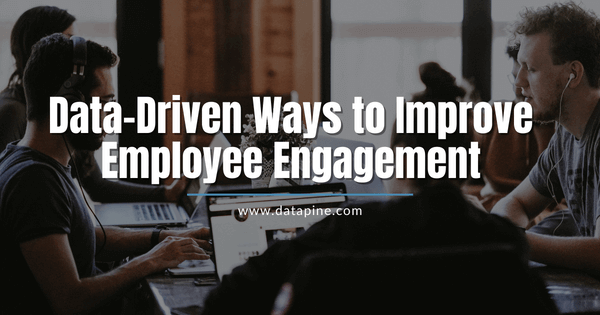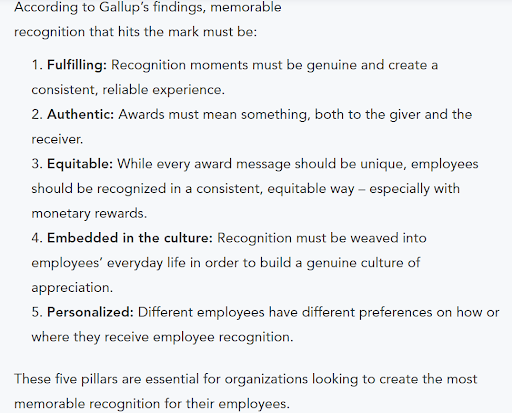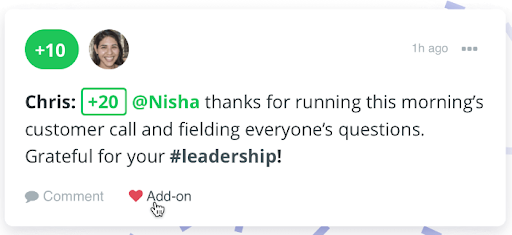[ad_1]

Employee engagement refers to the level of commitment employees have to their work, their team’s goals, and their company’s mission.
Engaged employees understand their purpose and impact on the organization. They don’t do just enough to get by, but instead willingly go beyond their job responsibilities to help their colleagues and the company as a whole succeed. They also tend to be more productive, stick around longer, and spread the good word about their workplace.
And so, it’s crucial to invest consistent efforts in maximizing employee engagement. But before you can improve something, you need to know where you stand. Start by monitoring your current levels of employee training and engagement. For this, you can use HR analytics software.
Also, a great way to collect employee engagement data is using Gallup’s Q12 survey, which consists of 12 carefully crafted questions that gauge the most crucial aspects of employee engagement. Send it out every six months, along with frequent pulse surveys that check in on your employees regarding specific matters (such as work-life balance or company culture).
Once you have a data-driven idea of where you stand, consider these four core ways (backed by studies and research) to improve employee engagement.
1. Improve employee onboarding
The first few weeks on the job are pivotal in deciding how engaged a new employee will be down the road. A good onboarding process sets the tone and makes the new recruits feel like they have a key role to play in their team’s success.
Recent statistics suggest that as much as 20% of employees churn within the first 45 days of employment, but on the flip side, a great onboarding experience ensures 69% of employees stick with a company for three years. Furthermore, 53% of HR professionals report that good onboarding boosts employee engagement rates.
Thus, investing in employee onboarding pays off in terms of better engagement and retention. A strong employee onboarding program:
- Connects new employees with their role, team goals, and company mission and culture
- Introduces them to mentors (that aren’t direct managers) who’ll guide them in their first year
- Prioritizes interactions and relation-building with peers
- Involves the leadership team in onboarding presentations
- Creates a smooth transition from the onboarding phase to regular work cadence
Here’s a great guide on building an effective employee onboarding process from start to finish. Couple this knowledge with powerful employee onboarding software that automates repetitive aspects of the process, and you’re well on your way to building an optimal onboarding program that boosts employee engagement from the get-go.
2. Focus on employee feedback
Employee feedback is a two-way street. According to a 2020 employee engagement report:
- 93% of highly engaged employees feel like they receive adequate feedback for their performance as opposed to 41% of disengaged employees.
- Highly engaged employees are 2.3x more likely than disengaged employees to say that their company takes their feedback seriously.
So, giving and getting feedback from employees lies at the heart of improving employee engagement.
If your managers aren’t already, they can start by scheduling regular (such as quarterly) performance review one-on-ones with their team members to provide constructive feedback to each individual about the things they’re doing well and things they can improve on (and how).
When it comes to getting feedback from employees about how you can improve their workplace experience, pulse surveys (mentioned earlier) are a quick and easy way to gather real, actionable insights. You can make these surveys anonymous to ensure psychological safety and encourage candid feedback. The results can later be displayed in an interactive HR report.
With regular employee feedback pouring in, make sure to act on it too, especially if you notice a trend in responses. And when you can’t incorporate the requested changes, share reasons why during company-wide meetings, so employees know they’re heard.
3. Recognize and reward contributions
Everyone loves being recognized and rewarded for their hard work. Receiving recognition from your company means your contributions aren’t going unnoticed, and that you’re valued at work. And as you’d expect, this plays a huge role in employee engagement.
In fact, Workhuman and Gallup partnered to study thousands of employees and understand what recognition means to them. According to their 2022 report, when employee recognition is on point, employees are:
- 5x less likely to leave
- 44% more satisfied with their work life
- 4x more actively engaged
So, one of the most effective ways to boost employee engagement and morale is having a robust rewards and recognition program that goes beyond a mere pat on the back every now and then. One that’s timely, frequent, personalized, visible, and inclusive. Gallup’s findings shed a light on the five pillars of an effective recognition program.

When shared publicly and often, recognition drives motivation further for everyone, resulting in more of the same good behavior and proactiveness in the future from other employees as well.
Check out this huge list of creative employee reward ideas to incorporate into your recognition program.
Ultimately, recognition must be woven into the everyday company culture to build an authentic, positive environment of appreciation. For this, consider adopting a platform like Bonusly that enables all employees to recognize their peers, direct reports, and managers easily by integrating with their daily communication tools such as Slack and MS Teams.

4. Facilitate professional development
63% of employees who left their jobs in 2021 listed a lack of opportunities for career advancement as a reason for their decision.
Simply put, stagnation leads to disengagement (and ultimately, churn).
On the flip side, if you tangibly show employees that you care not just about their contributions to your company but also their long-term career growth, they’re more inclined to perform better and stay longer.
According to a recent survey of 2,000 employees, the ones with access to professional development opportunities were 15% more engaged in their jobs, which resulted in a 34% higher retention rate.
Besides, regardless of which industry you’re in, the market and competition will constantly evolve, which means constant professional development is key to staying relevant and competitive.
Thankfully, there are many ways to facilitate professional development, from providing educational stipends and access to reputed certification courses to internal workshops and skills-based training.
Work with managers to incorporate career conversations in regular meetings with their teams. This way, managers can better understand their team’s professional goals, outline a growth trajectory for each individual, and facilitate continuous learning and development that helps keep employees engaged.
Wrapping up
As you can see, effective employee engagement encompasses just about everything, from onboarding to recognition.
While there’s plenty you can do to boost engagement at work, the four ways discussed above are proven to be effective based on recent data. So, invest heavily in these areas right away to witness an energetic and earnest workforce that’s driven to take your company to new heights.
Author Bio:
Lucy Manole is a creative content writer and strategist at Marketing Digest. She specializes in writing about digital marketing, technology, entrepreneurship, and SaaS. When she is not writing or editing, she spends time reading books, cooking and traveling.
[ad_2]
Source link


